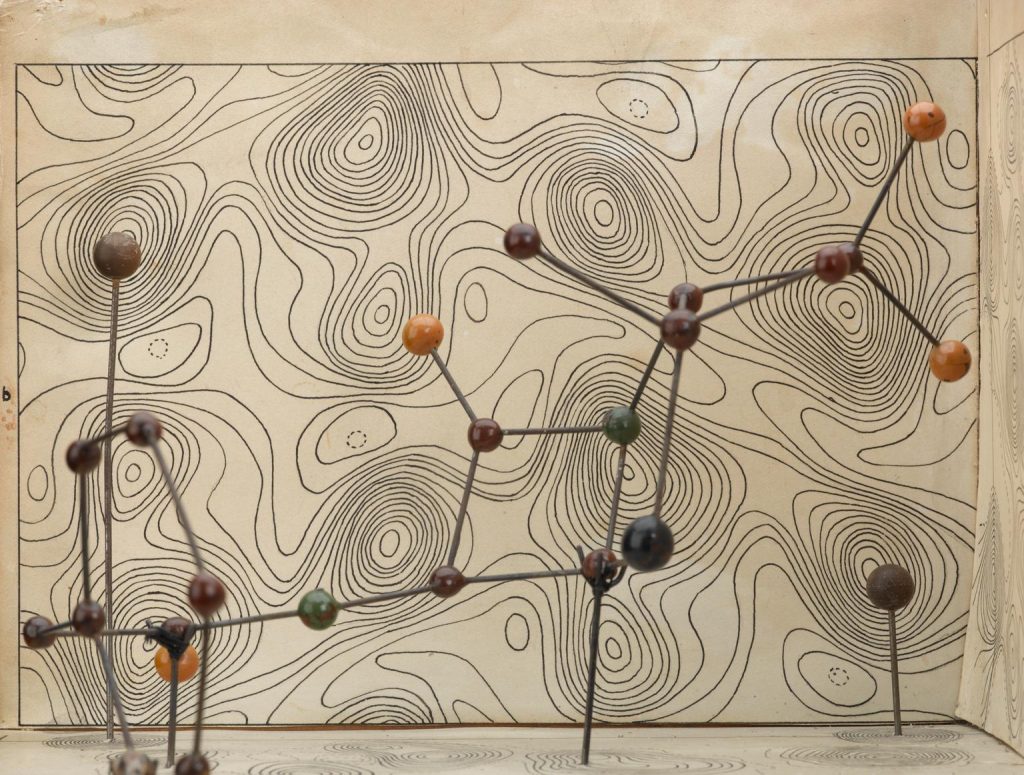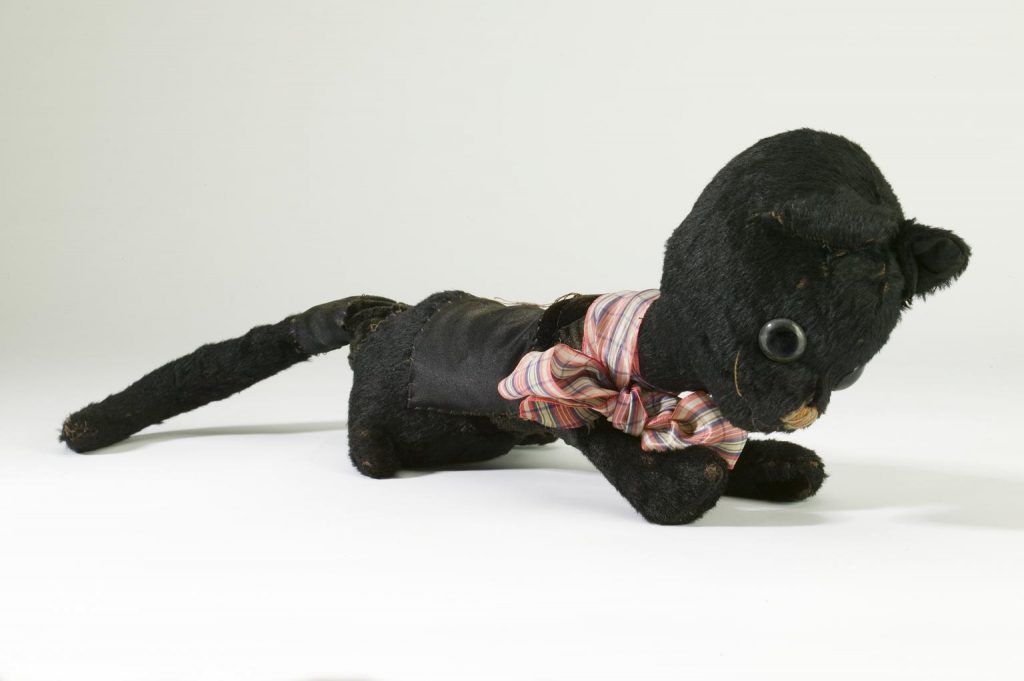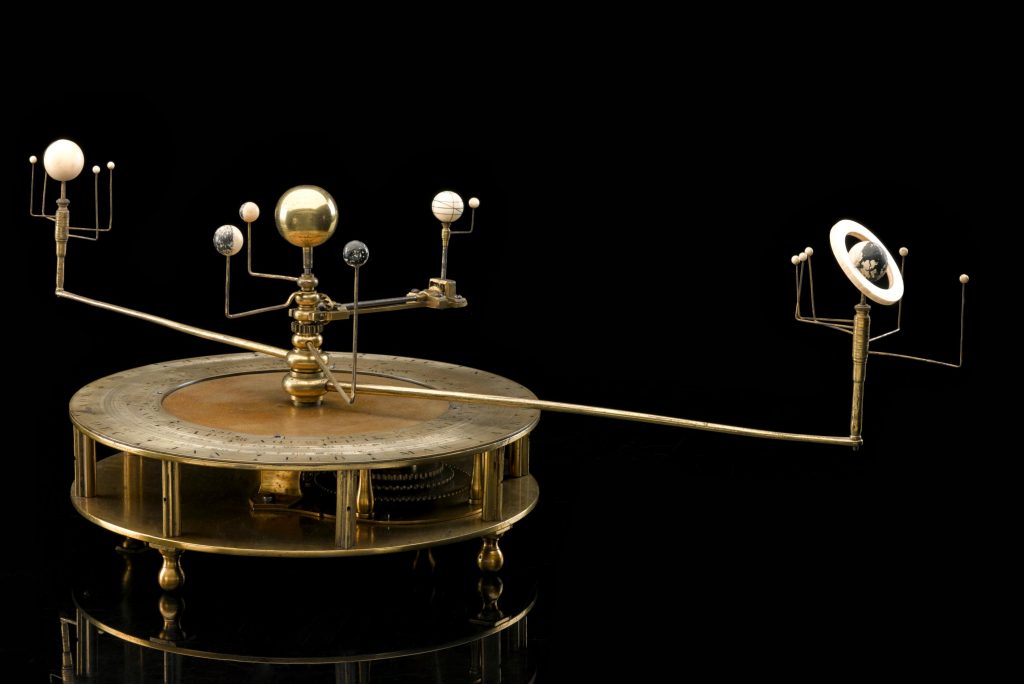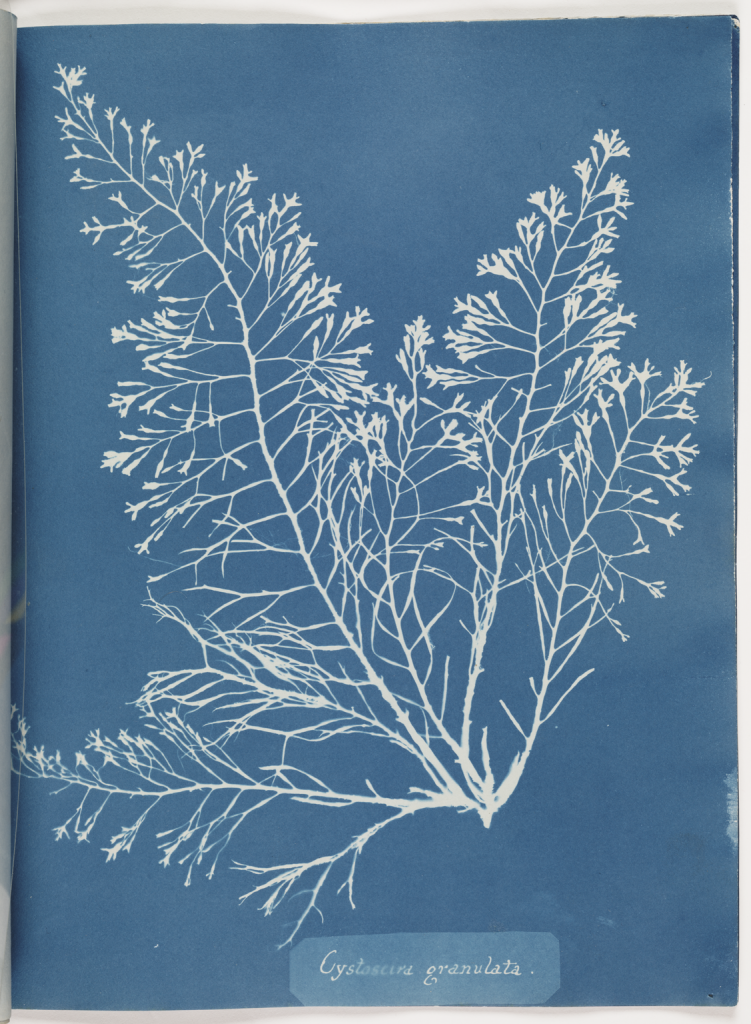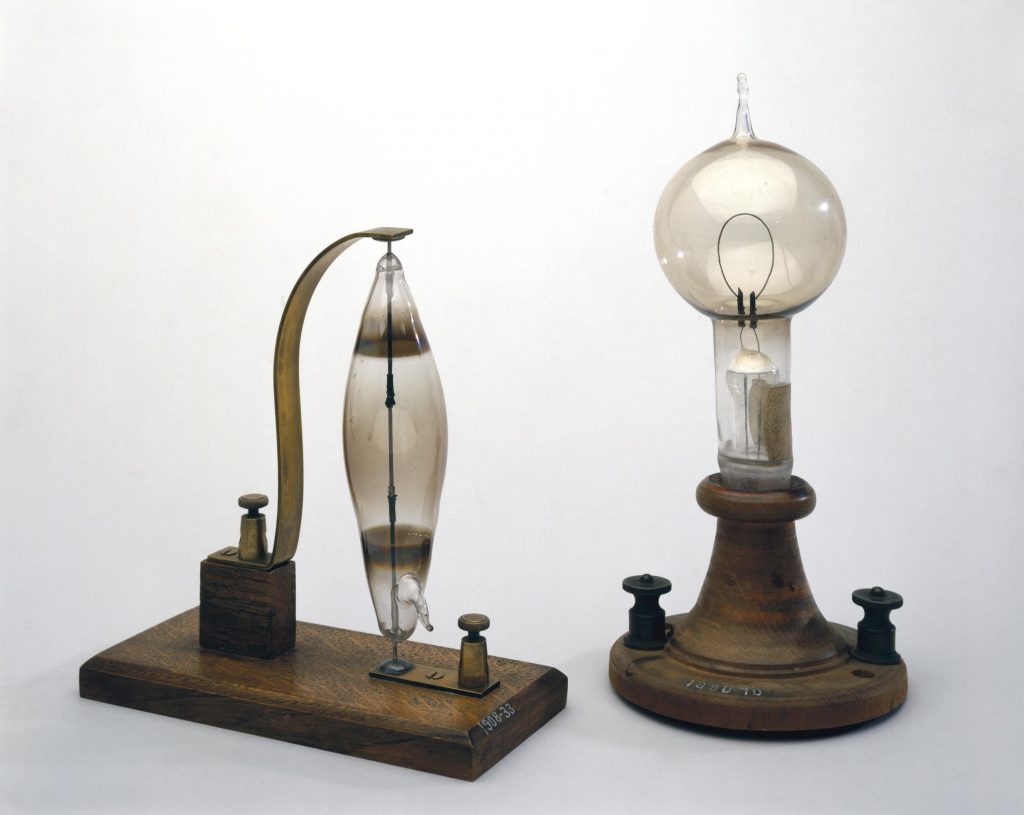With the outbreak of coronavirus, many of us are spending more time at home.
After being challenged to make a quiz for friends and family, here’s a ready-made quiz round of 15 questions featuring facts from the Science Museum Group Collection (answers below).
How many will you get right?
Question 1
At the age of 18, William Perkin’s chemical experiments led him to accidentally discover the first artificial dye. What colour was it?
Question 2
Which was the first planet to be discovered using a telescope?
Question 3
Dorothy Hodgkin discovered the chemical structure of which well-known antibiotic in 1945?
Question 4
The first successful non-stop flight across the Atlantic was made by John Alcock and Arthur Brown in what decade? For a bonus point: What surprising item flew with them?
Question 5
Who was the first Briton in space?
Question 6
What is the only human disease to have been completely eradicated?
Question 7
On 3 July 1938, a steam locomotive reached a record-breaking speed of 126mph. What animal-related name does the locomotive have?
Question 8
What communications technology was invented on 12 March 1989 by Tim Berners-Lee?
Question 9
Who became the first woman to fly solo from the United Kingdom to Australia in May 1930?
Question 10
The first photographically illustrated book in Britain was published in 1843 by Anna Atkins. What were the photographs of?
Question 11
The first instrument designed specifically for quality control in food manufacture was used to test what?
Question 12
Early incandescent electric lamps were invented independently in the 1870s by British inventor Joseph Swan and which American inventor?
Question 13
On a foggy November night in 1922, the words ‘This is 2LO calling’ announced the arrival of which world-renowned organisation?
Question 14
The world’s oldest surviving steam locomotive was built around 1814 for use at the Wylam Colliery in County Durham. What is it called?
Question 15
Thanks to her research, biologist Kathleen Drew-Baker is known as the Mother of the Sea in Japan. What popular dish did her research help save?
The answers
Question 1
At the age of 18, William Perkin’s chemical experiments led him to accidentally discover the first artificial dye. What colour was it?
Answer: Purple
The dye Perkin discovered in 1856 was known as mauvine. Perkin started a synthetic dye boom and within decades synthetic dyes were available in almost any shade you could imagine, bringing with them a fashion revolution.
Question 2
Which was the first planet to be discovered using a telescope?
Answer: Uranus
Uranus was the first planet to be discovered using a telescope, as Mercury, Venus, Mars, Jupiter and Saturn were all visible to the naked eye. It was discovered in 1781 by astronomer and musician William Herschel, who was the first to realise it was a planet (he initially thought it was a comet).
Question 3
Dorothy Crowfoot Hodgkin discovered the chemical structure of which well-known antibiotic in 1945?
Answer: Penicillin
Penicillin was successful as an antibiotic well before scientists knew its chemical structure.
Dorothy Hodgkin used large punch-card operated tabulators, predecessor to the computer, to analyse the patterns cast by X-rays reflected from a sample of Penicillin and determine its structure. This technique is known as X-ray crystallography and Hodgkin won the Nobel Prize for Chemistry in 1964 for her work.
Question 4
The first successful non-stop flight across the Atlantic was made by John Alcock and Arthur Brown in what decade? For a bonus point: What surprising item travelled with them?
Answer: 1910s
Bonus point: A toy cat called Lucky Jim
There were a number of teams vying to be the first to fly non-stop across the Atlantic, but it was John Alcock and Arthur Whitten Brown who made the first successful flight in 1919.
They flew in a Vickers Vimy aircraft with Lucky Jim, the toy mascot owned by Alcock.
Question 5
Who was the first Briton in space?
Answer: Helen Sharman
In 1991, Helen Sharman launched into space on an eight-day mission to the Mir space station, becoming the first Briton in space.
Two years earlier Helen had answered a radio advert: “Astronaut wanted. No experience necessary”. Helen wore this emergency space suit for the journey into space and back.
Question 6
What is the only human disease to have been completely eradicated?
Answer: Smallpox
Edward Jenner developed the first vaccine to prevent smallpox infections in 1796, and this success led to the global eradication of smallpox and the development of many more life-saving vaccines.
Question 7
On 3 July 1938, a steam locomotive reached a record-breaking speed of 126mph between Grantham and Peterborough. What animal-related name does the locomotive have?
Answer: Mallard
Built in Doncaster in 1938, Mallard was one of thirty-five A4 Pacific class locomotives designed by Sir Nigel Gresley for London and North Eastern Railway (LNER). Mallard is now one of only six remaining A4 Pacifics in the world.
Question 8
What communications technology was invented on 12 March 1989 by Tim Berners-Lee?
Answer: World Wide Web
Browsing online has become such second nature that it’s hard to believe the web is only 30 years old and was originally created to make life easier for research scientists.
The internet traces its origins back to the 1950s. It is now a global network of connected computers through which the World Wide Web (a collection on web pages) can be accessed.
Question 9
Who became the first woman to fly solo from the United Kingdom to Australia in May 1930?
Answer: Amy Johnson
Amy Johnson set off from Croydon in this De Havilland Gipsy Moth aeroplane which she named Jason. Nearly twenty days and 11,000 miles later, she touched down in Port Darwin, Australia.
Amy followed this trip with record-breaking flights to Japan, South Africa and India. Johnson, whose feats made her a global celebrity, worked as an aircraft ferry pilot during the Second World War.
Question 10
The first photographically illustrated book in Britain was published in 1843 by Anna Atkins. What were the photographs of?
Answer: Algae
Anna Atkins was one of the first female photographers and produced the first photographically illustrated book in Britain. Titled British Algae: Cyanotype Impressions, the three-volume publication contained over 400 photographs of British algae.
Cyanotypes, also known as blueprints, were made using chemically photosensitive paper and became very popular in 19th century amateur photographic circles.
Question 11
The first instrument designed specifically for quality control in food manufacture was used to test what?
Answer: The consistency of jelly
Devised by a German chemist in 1861, the jelly puncture test was soon followed by a series of improved jelly strength testers. Jelly testing led to a new field in chemistry concerned with investigating the properties of gelatinous substances.
We have two early jelly strength testers in our collection, including one used at an East London confectionery factory, Bard Brothers, which was one of Britain’s leading suppliers of fruit jelly.
Question 12
Early incandescent electric lamps were invented independently in the 1870s by British inventor Joseph Swan and which American inventor?
Answer: Thomas Edison
The invention of the incandescent lamp bulb we’re familiar with today took decades. The main challenges lay in making a durable filament that produced a bright and steady light, and creating the best possible vacuum inside the glass bulb to prolong the filament’s life.
Early experimenters such as Joseph Swan began trialling materials to make a durable filament as early as the 1840s, although it wasn’t until the 1870s that he and Thomas Edison most famously produced commercially viable lamp bulbs.
Question 13
On a foggy November night in 1922, the words ‘This is 2LO calling’ announced the arrival of which organisation?
Answer: The BBC
In 1922 the BBC transmitted its first radio programme, marking the beginnings of official state broadcasting and a new era for listeners at home.
2LO, the BBC’s first radio transmitter, took words and music from studios in Savoy Hill near The Strand and transmitted them to listeners at home. At this time the BBC’s reach was limited to London.
Question 14
The world’s oldest surviving steam locomotive was built around 1814 for use at the Wylam Colliery. What is it called?
Answer: Puffing Billy
Dating to 1813-1814, Puffing Billy was built by William Hedley, Jonathan Forster, and Timothy Hackworth, for use at the Wylam Colliery near Newcastle-Upon-Tyne.
Colloquialisms “puffing like Billy-o” and “running like Billy-o” may have been derived from the locomotive’s name.
Question 15
Thanks to her research, biologist Kathleen Drew-Baker is known as the Mother of the Sea in Japan. What popular dish did her research help save?
Answer: Sushi
To make sushi, a special kind of seaweed is needed, called nori. However, growing and harvesting nori is difficult and unpredictable, as it can be easily damaged by typhoons or pollution.
Kathleen’s research (using this microscope now in the collection) into seaweed found off the coast of Wales enabled the cultivation of edible seaweed in Japan, leading to sushi becoming a popular dish around the world.
Such was the impact of Kathleen’s research that she became known as the Mother of the Sea, and Japanese nori farmers have an annual festival on 14 April (her birthday).


